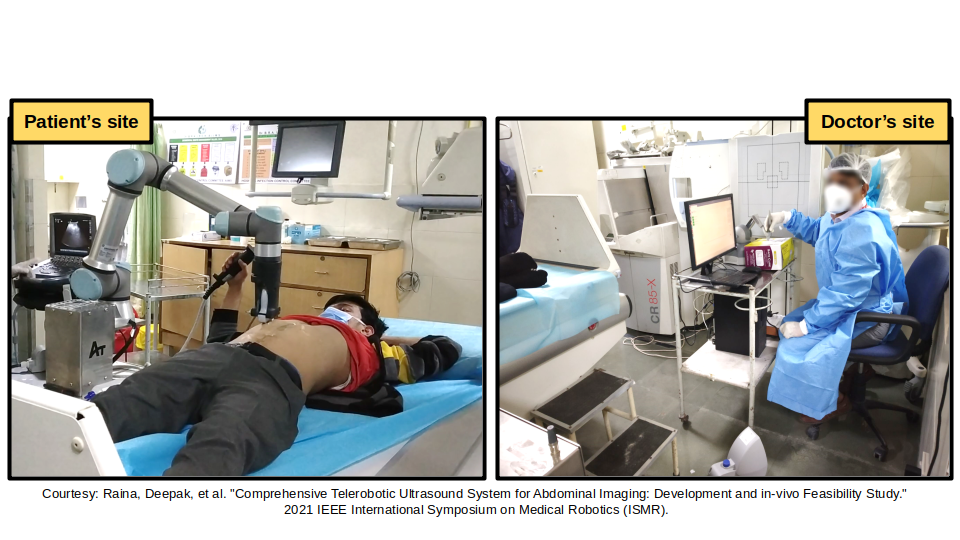The project is a collaboration between IIT Delhi and AIIMS

Remote ultrasound imaging is finally a reality, thanks to a research collaboration between IIT Delhi and AIIMS New Delhi. The system allows remote ultrasound access through a robotic arm. In the routine ultrasound setting, the doctor (radiologist) stands in close contact with the patient for the entire scan duration. However, cross-sectional imaging is preferred instead in the current pandemic scenario with stringent social distancing requirements – a more expensive and less dynamic technique. Ultrasonography is a non-invasive, non-ionizing, cost-effective, rapid, bedside, and readily available modality with immense use in point-of-care and follow-up examinations.
Prof. Chetan Arora and Prof. Subir Kumar Saha from IIT Delhi said, “This requirement came to us from the faculty of AIIMS New Delhi, when the whole nation had been put on lockdown in June 2020, and the number of cases and deaths was rising rapidly. The prevailing situation impacted regular health care services, especially those involving direct physical contact with patients like ultrasound scanning. We wanted to contribute to the safety of healthcare professionals by leveraging our expertise in robotic technology.”
Dr. Chandrashekhara, AIIMS, New Delhi, “This system will promote healthcare and make our system more prepared for further pandemics. Besides its role in the pandemic, it will allow a better outreach of ultrasound imaging to remote rural areas of India. The radiologist manipulates the ultrasound probe remotely from a remote location, acquires the ultrasonographs, and then transmits them to the monitors at the doctor’s end through a Wi-Fi network. Sitting at a remote location, the doctor can visualize all the images and assess the patient, similar to a clinical setting. The facility can also be extended for global outreach.”
Speaking about the jointly developed Telerobotic Ultrasound System, Mr Deepak Raina said that control architecture had been developed to teleoperate the ultrasound probe attached to the robotic arm while ensuring the patient’s safety and the quality of ultrasound images.
Mr Suvayan Nandi at Addverb said that telerobotics is an emerging area in medicine and adoption of this technology will pave the way for Addverb to contribute to the upcoming revolution of medical robotics in India.

Subscribe To Our Newsletter & Stay Updated